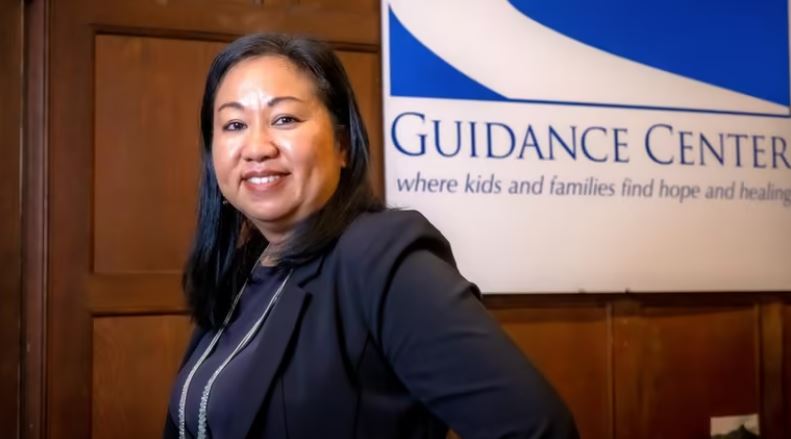By Bart Jones, Published in Newsday, August 11, 2024
The mental health of teenagers improved somewhat as the COVID-19 pandemic eased, a new federal study says, though experts on Long Island said it remains a major problem, fueled in part by addiction to cellphones and social media.
The number of adolescents reporting persistent sadness or hopelessness dropped slightly between 2021 and 2023, from 42% to 40%, the Centers for Disease Control and Prevention said in a report released last week. For girls, the percentage dropped from 57% to 53%, while the number of girls who seriously considered suicide fell from 30% to 27%.
Mental health experts on Long Island said that while those numbers may be cause for limited optimism, they underscored that depression, anxiety and other issues remain widespread among teenagers.
“Even though there are some improvements in some of the mental health markers among youth, it is important to note how dramatic the continued mental health crisis is,” said Dr. Victor Fornari, the vice chair of child and adolescent psychiatry for Northwell Health.
He noted that four out of every 10 teenagers reported continuous sadness or hopelessness in 2023, meaning they felt so despondent for at least two weeks that they stopped doing their usual activities. About 20% seriously considered suicide, 16% came up with a suicide plan, and 9% attempted suicide, according to the report.
And while the number of teens reporting persistent sadness or hopelessness fell to 40% in 2023, a decade earlier it was 30%.
Dr. Adria Gerber, a licensed clinical psychologist at Stony Brook Medicine, said that “although there has been some improvement … the numbers are daunting.”
The report did not include figures on suicides among teenagers, but according to the CDC, suicide is now the second-leading cause of death after unintentional injury among people ages 10 to 34 in the United States.
Guarded optimism about new numbers
CDC officials said they saw reasons for hope with the latest report.
“One of our main priorities at [the] CDC is improving Americans’ mental health,” Dr. Debra Houry, the CDC’s chief medical officer and deputy director for program and science, said in a statement. The report shows “improvements to a number of metrics that measure young people’s mental well-being — progress we can build on. However, this work is far from complete.”
Among minority teenagers, the report found some improvement also.
The number of Hispanics who felt persistently sad or hopeless fell from 46% to 42%. Hispanic students who seriously considered attempting suicide dropped from 22% to 18%, while those who made a suicide plan fell from 19% to 16%.
Among Black students, the amount who attempted suicide fell from 14% to 10%, while those injured in a suicide attempt fell from 4% to 2%.
For LGBT+ students, the study found troubling trends: In 2023, nearly three in 10 were bullied at school, and two in 10 attempted suicide.
Some local experts attributed the small improvements to the country emerging from the height of the COVID-19 pandemic and returning to some normalcy. The CDC study was based on data from the 2021 and 2023 national Youth Risk Behavior Survey. The pandemic erupted in the United States in March 2020.
“Some of it might be coming out on the other side of the pandemic,” Fornari said. “We know that the COVID pandemic demonstrated a dramatic increase in mental health concerns among youth” as they had to stay home for months and engage in remote learning.
Christopher Coluccio, of Blue Point, whose 14-year-old son, also named Christopher, died by suicide in 2021, agreed.
“I have a concern that, as much as it’s a good number, that some of it is just falling off from how people were in COVID and that we’re just getting back to the real numbers,” said Coluccio, who now runs a foundation aimed at combating suicide.
Others said the improvements might be due to more people seeking mental health services as the stigma surrounding the issue slowly dissipates.
“The one good thing about COVID is that we really laser-focused on people’s mental health, because we saw it deteriorating so quickly,” said Jeffrey Friedman, CEO of the nonprofit CN Guidance & Counseling Services in Hicksville.
“We’re seeing more people access services, and when more people access services and enter treatment, we do see a decrease in people experiencing sadness or hopelessness and an increase in their overall mental health,” he said.
His agency has seen a 20% increase in young people receiving mental health assistance since 2022, he said.
Gerber, who works at the Outpatient Child and Adolescent Psychiatry Department of Stony Brook University Hospital, said that clinic was overwhelmed with requests for help during the early years of the pandemic, with a 200% increase between 2020 and 2022. Social isolation due to the pandemic was causing widespread depression, anxiety and other issues, she said.
“We were getting this huge increase in call volume that we weren’t able to manage,” she said.
Demand for service is still high, she said, but has dropped to a more manageable level.
Access to mental health counseling has improved partly because of another consequence of the pandemic — “telehealth,” or counseling sessions held over Zoom or other programs. Now teenagers don’t have to rely on their parents to drive them to a therapist’s office, she said.
Not all local experts think the mental health situation of teenagers has improved.
“Rates of depression and anxiety are pervasive, particularly among Hispanic girls,” said Kathy Rivera, executive director and CEO of North Shore Child & Family Guidance Center in Nassau County. Her agency has “not seen a reduction in the overall need for our vital children’s mental health programs.”
Claudia Boyle, CEO of the Hispanic Counseling Center in Hempstead and Bay Shore, said that while the overall picture for Hispanics nationwide may have improved, “That’s not the case … in Nassau and in Suffolk. I don’t feel that it’s going down.”
Her agency is receiving a growing number of calls for help, with self-harm, hopelessness, thoughts of suicide and other problems common. Even this summer — a season when requests typically drop — the number of calls has remained steady.
“The kids have very few coping skills,” she said. “It’s just a different world.”
Social media and mental health
Many experts attribute some of the ongoing mental health problems to the emergence over the last decade of ubiquitous cellphones and social media.
U.S. Surgeon General Dr. Vivek Murthy in 2023 issued an extraordinary public warning that social media poses a threat to the mental health of young people. In June, he called for warning labels on the platforms, like those mandated on cigarette boxes. Adolescents who spend more than three hours a day on social media face double the risk of anxiety and depression symptoms, he said.
Cellphones, said Northwell’s Fornari, are central to the mental health crisis “because we are holding a handheld computer that has access to the internet and social media. Youth are targeted and bullied on social media in ways that we can’t even imagine. It’s not just being called names in the cafeteria or in the hallway. It really can be quite toxic and quite hurtful.”
Rivera agreed, and said many teens are even turning to the internet for inappropriate mental health assistance.
“The dangers of social media have only intensified over time,” she said. “Many youths, particularly teens, are turning to online platforms for self-diagnosis and treatment or use unregulated mental health apps to fill their need for social connectedness. While these may offer temporary relief, they fail to address the underlying issues, which may exacerbate at a later time.”
Still, some experts have hope that the improvement in the numbers cited by the CDC will continue. They say the growing number of famous people speaking out about their mental health struggles can help end the stigma around the topic.
Simone Biles, considered the greatest gymnast of all time, has spoken openly of her mental health struggles — and how therapy helped her. After withdrawing from five event finals at the 2021 Tokyo Olympics, she came back to this summer’s games in Paris — and won three gold medals and one silver.
“She’s phenomenal,” Gerber said. “It’s just unbelievable to see the turnaround and to see her performance. I think she brought to the stage just this understanding that she’s human. She’s shown that if you admit what is going on, there is a community out there to help you. They can help you become your best self.”
Link to article, Mental health among nation’s teens takes upward turn, but challenges remain, study says – Newsday















